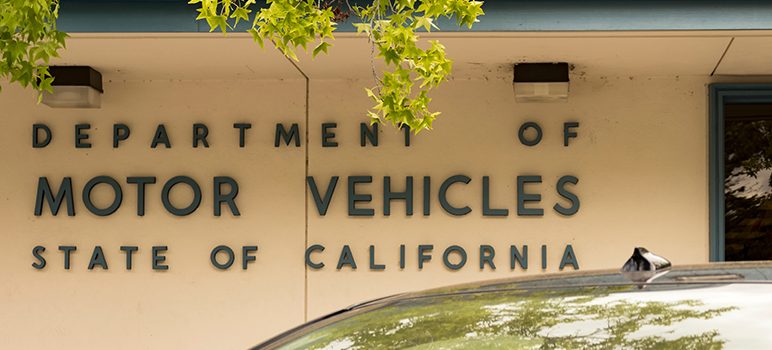Starting Jan. 1, California law will again require drivers 70 and older to renew their license in person at a DMV office. In October 2020, Gov. Gavin Newsom temporarily waived the California law requiring senior drivers to renew their licenses at a DMV field office and signed AB 174 in September 2021 to allow online or by mail renewals through the end of 2022. This temporary online option has helped Californians avoid DMV field offices during the COVID-19 pandemic.
Also beginning next week, the DMV is sending notices to Californians who have had their permanent Disabled Person Parking Placard for at least six years and asking them to confirm that they are still in need of one. The DMV will not renew placards for people who do not respond.
In another vehicle-related law change, dealers and manufacturers that sell new passenger vehicles equipped with a partial driving automation feature or provide any software update or vehicle upgrade that adds such a feature will be required to give a clear description of its functions and limitations.
Bicyclists will get new protection in 2023. Drivers are now required to change into another available lane, when possible, to pass cyclists, building on the current requirement for drivers to give cyclists at least three feet of space when passing. The law also permits Class 3 e-bike riders to use approved bicycle paths and trails, bikeways, and bicycle lanes.
In 2024, the law will allow cyclists to cross an intersection when a walk sign is on.
Veterans will be receiving new consideration in 2023 by the DMV. The $5 fee for obtaining a military “VETERAN” designation on a driver’s license or identification (ID) card has been eliminated, and certain veterans – a disabled veteran, Pearl Harbor survivor, prisoner of war, or to veterans who have received distinctions such as the Purple Heart or the Congressional Medal of Honor – will be able to display specialized license plates that exempt them from paying tolls on roads, bridges, highways, vehicular crossings, or other toll facilities.
Finally, California state courts next year will stop sending notices to the DMV for license suspensions for failure to appear.


“Drivers are now required to change into another available lane, when possible, to pass cyclists, building on the current requirement for drivers to give cyclists at least three feet of space when passing.”
It’s something I do myself as a motorist, but be aware that while it’s a good idea, it may encourage behaviors that are anathema to us real cyclists, in this case, wrongfully careless and improper lane misuse, such as improperly riding well into the roadway when unnecessary, instead of properly as far right as practicable and safe, and it may encourage improperly riding two (or more) abreast rather than properly single file to the right as should be done, especially on anything but the smallest, narrowest residential and side streets (without a center lane marking and suitable for 20 mph or slower use by all).
“The law also permits Class 3 e-bike riders to use approved bicycle paths and trails, bikeways, and bicycle lanes.
In 2024, the law will allow cyclists to cross an intersection when a walk sign is on.”
Hopefully there will be some good work (for a change) done on speed limits and enforcement with Class 3 E-bikes in particular, on bicycle facilities and even more on shared-use facilities, with severe penalties for violations. To put a speed limit either of 20 mph (compatible with other E-bike classes plus with lower-speed vehicles in other contexts, the more practical choice in the USA) or move eventually toward limiting E-bikes (maybe even lower classes in general) and other bikes on shared-use facilities, in particular, to 15 mph would be safer.
Let us hope cyclists at least will stay out of crosswalks if they proceed on walk signals, and thank goodness stop sign running (red light running, railroad crossing signal running, and other comparable behaviors next) wasn’t legalized as well. Or they should be required to walk bikes in crosswalks.